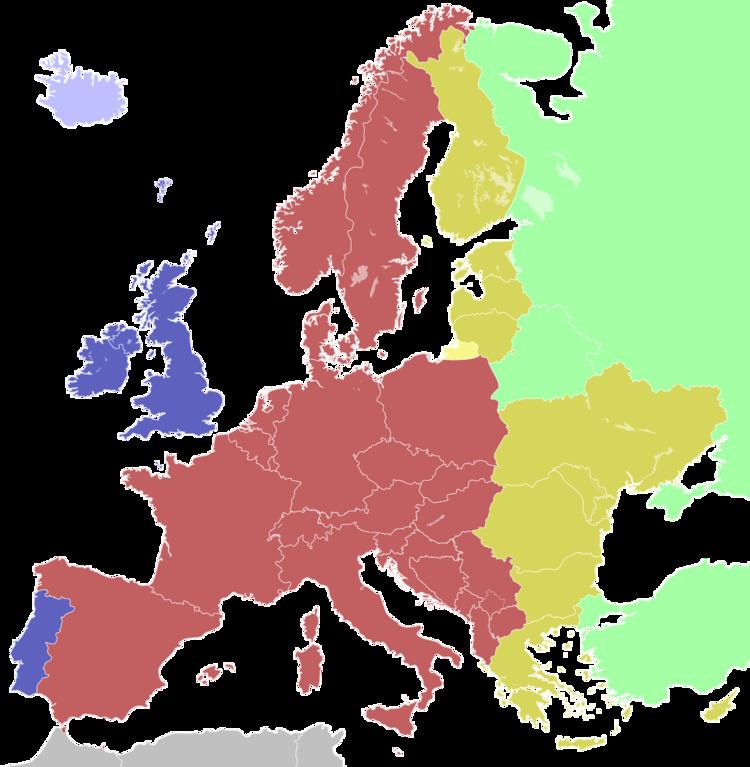 | ||
Western European Time (WET, UTC±00:00) is a time zone covering parts of western and northwestern Europe. The following countries and regions use WET in winter months:
Contents
- Historical uses
- Located west of 730 W physical UTC 1
- Areas located within UTC longitudes using other time zones
- References
All the above countries except Iceland implement daylight saving time in summer, switching to Western European Summer Time (WEST, UTC+1), which is one hour ahead of WET. WEST is called British Summer Time in the UK and is officially known as Irish Standard Time in Ireland.
The nominal span of the time zone is 7.5°E to 7.5°W (0° ± 7.5°), but the WET zone does not include the Netherlands, Belgium, Luxembourg, France, Gibraltar or Spain which use Central European Time (CET), although these are mostly (France) or completely (the rest) west of 7.5°E. Conversely, Iceland and eastern Greenland are included although both are west of 7.5°W. In September 2013, a Spanish parliamentary committee recommended switching to WET, a move being considered by MPs.
Historical uses
A slight variation of this time zone, based until 1911 on the Paris Meridian, was used in:
Until the Second World War, France used WET. However, the German occupation switched France to German time, and it has remained in CET since then. Two other occupied territories, Belgium and the Netherlands, did the same, and Spain also switched to CET in solidarity with Germany under the orders of General Franco.
In the United Kingdom, from 1940 to 1945 British Summer Time (BST=CET) was used in winters, and from 1941 to 1945 and again in 1947, British Double Summer Time (BDST=CEST) was used in summers. Between 18 February 1968 and 31 October 1971, BST was used all year round.
In Ireland, from 1940 to 1946 Irish Summer Time (IST=CET) was used all year round, with no 'double' summer time akin to that in the United Kingdom. Between 18 February 1968 and 31 October 1971, Irish Standard Time was used all year round.
In Portugal, CET was used in the mainland from 1966 to 1976 and from 1992 to 1996. The autonomous region of the Azores used WET from 1992 to 1993.
Located west of 7°30′ W ("physical" UTC-1)
Areas located within UTC longitudes using other time zones
These areas are located between 7°30′ W and 22°30′ W ("physical" UTC)
Areas using UTC+1: See Central European Time
